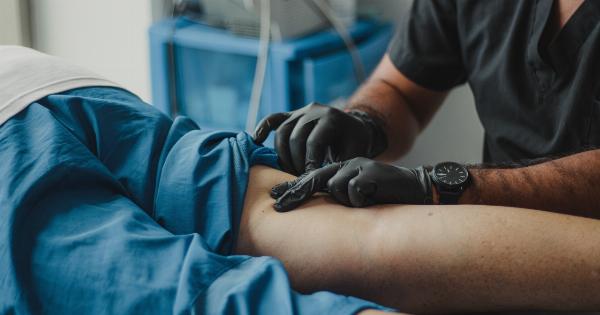Arthroplasty is a surgical procedure that replaces a damaged joint with an artificial one, commonly referred to as a prosthesis. It is used to treat severe joint pain or disability caused by damage or injury to the joint.
Arthroplasty is one of the most commonly performed orthopedic surgeries, and it has proven to be a definitive fix for joint damage.
The types of Arthroplasty
Arthroplasty can be performed on various parts of the body, including hips, knees, shoulders, and elbows. The specific type of arthroplasty depends on the joint being treated.
Hip Arthroplasty
Hip arthroplasty involves replacing the hip joint with an artificial one. This procedure is often performed on patients with hip osteoarthritis, hip dysplasia, or a hip fracture.
During the surgery, the damaged femoral head and socket are replaced with metal, ceramic, or plastic components. Hip arthroplasty can greatly improve mobility and quality of life for patients.
Knee Arthroplasty
Knee arthroplasty, also known as knee replacement surgery, involves replacing the damaged or diseased knee joint with an artificial one. This procedure is common in patients with severe knee osteoarthritis, rheumatoid arthritis, or a knee injury.
During the surgery, the damaged bone and cartilage are removed and replaced with metal and plastic components that mimic the normal joint anatomy and help restore function to the knee.
Shoulder Arthroplasty
Shoulder arthroplasty involves replacing the damaged shoulder joint with an artificial one. This procedure is often performed on patients with shoulder osteoarthritis, shoulder dysplasia, or a shoulder injury.
During the surgery, the damaged ball and socket are replaced with metal and plastic components that mimic the normal shoulder anatomy. Shoulder arthroplasty can greatly improve range of motion and reduce pain and discomfort for patients.
Elbow Arthroplasty
Elbow arthroplasty involves replacing the damaged elbow joint with an artificial one. This procedure is often performed on patients with severe elbow osteoarthritis, elbow dysplasia, or a traumatic injury to the elbow.
During the surgery, the damaged ends of the bones are removed and replaced with metal and plastic components that mimic the normal elbow anatomy. Elbow arthroplasty can restore function to the elbow and reduce pain and discomfort for patients.
The benefits of arthroplasty
Arthroplasty can significantly improve mobility and quality of life for patients with severe joint damage and pain. Patients who undergo arthroplasty often report reduced pain, improved range of motion, and increased mobility.
Arthroplasty can also help prevent further damage to the joint and reduce the risk of developing other joint-related conditions in the future.
Risks of arthroplasty
As with any surgical procedure, arthroplasty is not without risks or potential complications. The most common complications associated with arthroplasty include infection, nerve damage, bleeding, and blood clots.
Additionally, patients may experience pain, stiffness, and limited mobility in the joint after surgery. It is important for patients to discuss the potential risks and benefits of arthroplasty with their doctor before undergoing the procedure.
Recovery from arthroplasty
Recovery from arthroplasty varies depending on the joint being treated and the patient’s overall health. Most patients are able to return home the same day or within a few days after surgery.
However, full recovery may take several months and may require physical therapy and rehabilitation to restore strength and mobility to the joint. Patients are typically advised to avoid high-impact activities, such as running or jumping, after arthroplasty to prevent damage to the artificial joint.
Conclusion
Arthroplasty is a definitive fix for joint damage and can greatly improve mobility and quality of life for patients with severe joint pain or disability. While there are risks associated with arthroplasty, the benefits often outweigh these risks.
Patients who are considering arthroplasty should discuss the potential risks and benefits of the procedure with their doctor to determine if it is the right choice for them.































